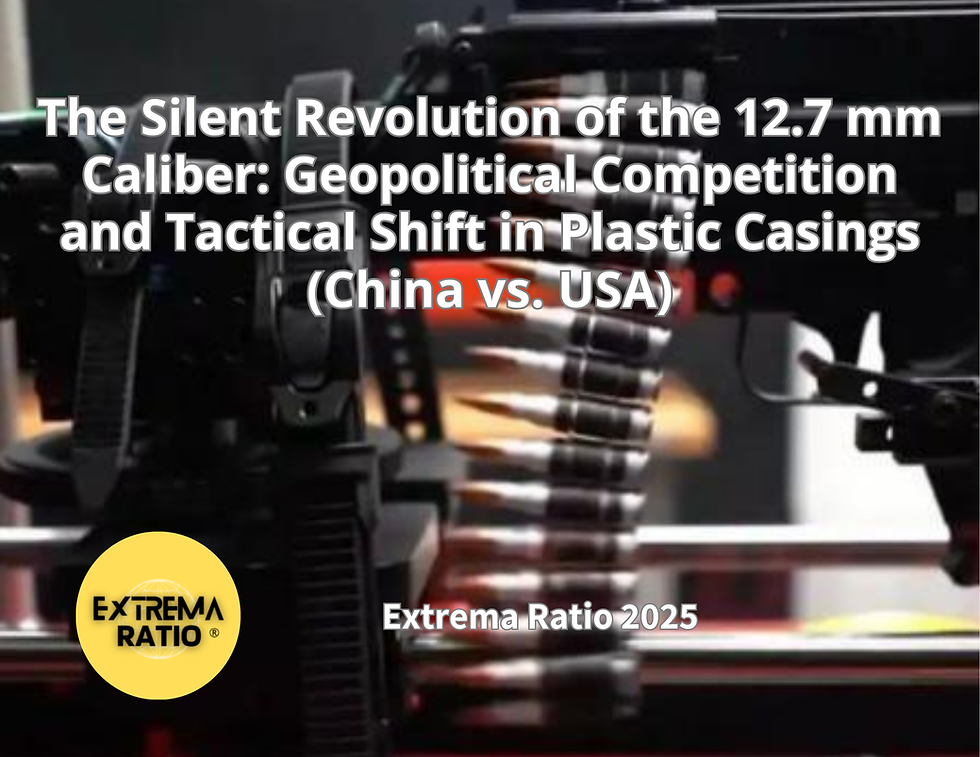Atomic Strait: How China’s Nuclear Buildup Shapes Security Dynamics with Taiwan and the United State
- Gabriele Iuvinale

- 20 feb 2023
- Tempo di lettura: 2 min
Focus on Indo-Pacific
G Iuvinale
A recent report by Jacob Stokes, Senior Fellow Indo-Pacific Security Program at CNAS, examines the intersection of China’s nuclear modernization and cross-Strait tensions, especially how they might play out during a crisis, contingency, or conflict involving China,
Photo: Taiwan strait map close up in an small world globe, Gettyimages

Taiwan, and the United States. Beijing is rapidly modernizing its nuclear arsenal to make it larger and more sophisticated. Changes include an increase in warhead numbers from more than 400 today to potentially 700 by 2027 and more beyond, consolidating a nuclear triad, developing new delivery systems, and digging at least 300 new missile silos. Some factors still could constrain the growth of China’s arsenal or the policies that shape the way Chinese leaders employ it. They range from fissile material stocks to competing military spending priorities, considerations about China’s international reputation, and upholding Beijing’s claimed No First Use policy. But nearly all those constraining factors either already have weakened or could do so in the near future.
"China’s long-term goal for the expansion, however, could be more ambitious and potentially even include seeking to build an arsenal on par with Washington’s and Moscow’s."
China’s expanding nuclear arsenal suggests that the force will be designed to fulfill new missions. Some part of Beijing’s buildup surely is meant to bolster its second-strike retaliatory capability in the face of what China perceives as shifts in U.S. conventional and nuclear capabilities and policies. China’s long-term goal for the expansion, however, could be more ambitious and potentially even include seeking to build an arsenal on par with Washington’s and Moscow’s. Meanwhile, China continues to ramp up pressure on Taiwan using political, economic, and military tools. Beijing’s campaign could provoke more crises in the coming years. The three major roles that nuclear weapons could play for China when dealing with cross-Strait crises or conflicts are: to shield China from U.S. nuclear coercion, to threaten Chinese nuclear use to try to forestall U.S. intervention, and to conduct a limited Chinese nuclear detonation in an attempt to force U.S. and Taiwanese capitulation.
"At some point, the military value of expanding China’s nuclear arsenal will have diminishing marginal utility. In other words, each addition will add less and less deterrent or coercive value relative to the conventional systems the PLA could acquire that are more useable."
The report concludes with recommendations for U.S. policymakers. It calls for carrying out U.S. nuclear modernization plans to deter China but avoiding nuclear arms racing as a strategy in itself. It recommends incorporating nuclear elements into contingency planning and scenario exercises related to Taiwan, both unilaterally and with allies and partners. The report then calls for improving Taiwan’s conventional military capabilities while maintaining a consistent U.S. policy on cross-Strait issues and ensuring Taiwan forgoes pursuing indigenous nuclear weapons. Finally, the report argues in favor of pushing forward tough-minded bilateral engagement with Beijing on strategic stability and security issues while crafting a multilateral arms control strategy that builds coalitions to incentivize China to join and impose costs on Beijing if it opts to stay outside of key agreements.




Commenti